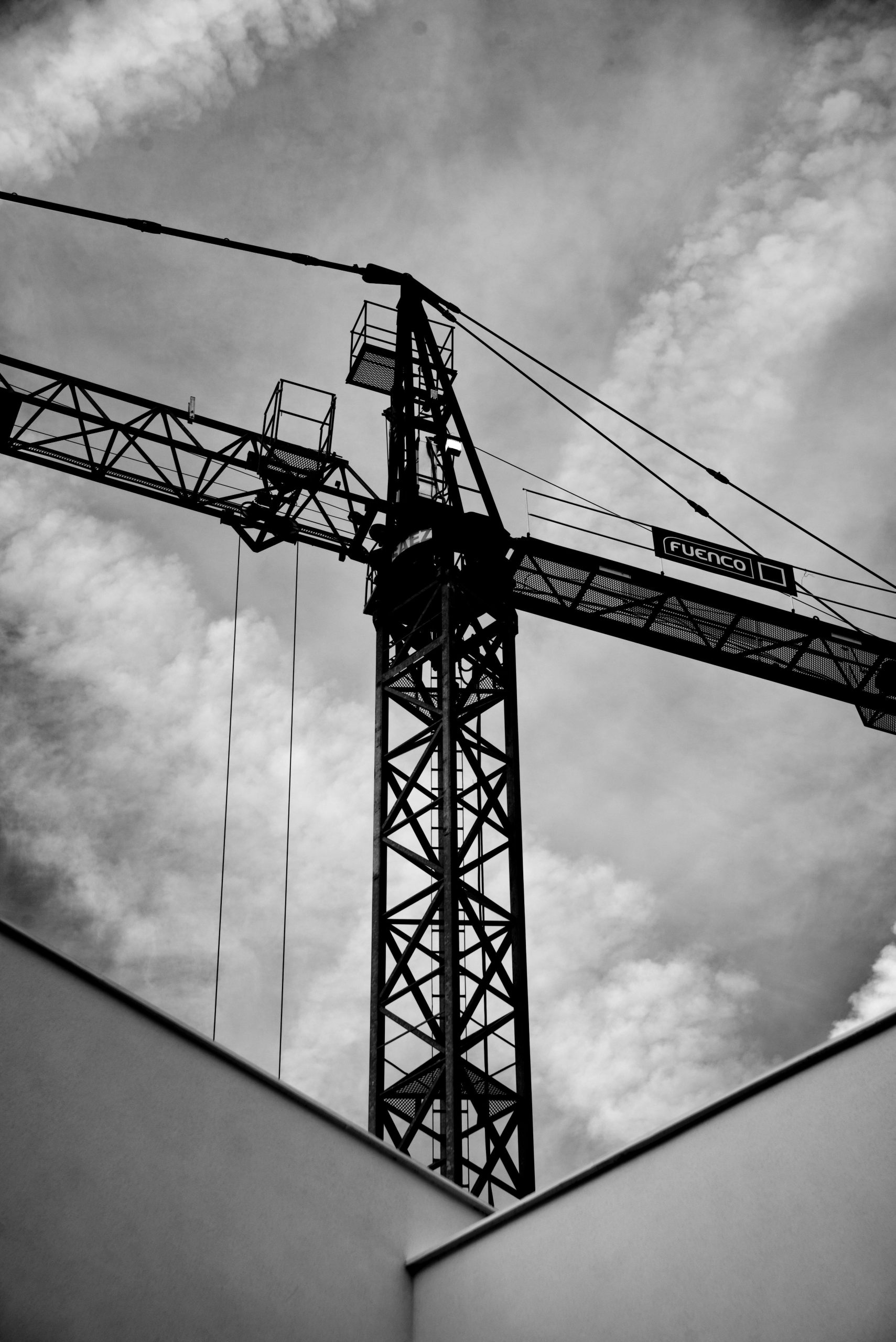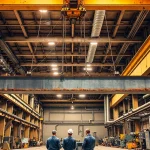Overhead crane engineering demands precision to ensure safe and efficient operations. Understanding design principles, compliance with stringent safety standards, and customized solutions can transform facility workflows while preventing costly accidents. Expert manufacturers like E&C Crane Engineering combine cutting-edge technology with rigorous testing to deliver reliable cranes tailored to diverse industrial needs, enhancing both productivity and operator safety.
Meeting Technical, Safety, and Customisation Demands in Overhead Crane Engineering
Addressing the evolving needs of modern facilities, Smithwick Engineering places particular emphasis on meeting rigorous technical and safety requirements through innovative crane design principles and strict compliance with lifting equipment safety standards. Their engineering teams ensure that every overhead crane project begins with a comprehensive assessment of load capacity, workspace dimensions, and structural support. This approach not only improves operational efficiency but also minimizes risks in high-stakes environments.
Also to read : How Can UK Travel Agencies Use Augmented Reality to Enhance Trip Planning?
Material handling solutions must adhere to current regulatory safety frameworks. This is accomplished with thorough load testing procedures, robust crane failure analysis, and proactive compliance with industrial regulations. Attention to detail—such as precision in bridge beam design and careful selection of steel framework materials—reinforces structural integrity throughout the crane’s lifecycle. Regular safety audits, combined with detailed inspection procedures, contribute to a track record of low incident rates while instilling confidence in facility managers and operators.
Customization stands at the forefront of their service model. By leveraging advanced crane design software and incorporating user feedback, they develop systems tailored to unique project demands—including specialized end carriages, operator cabs, and automated control systems for enhanced safety and productivity. Investment in ongoing maintenance training, wireless remote operation, and emergency stop technology further illustrates an unwavering commitment to seamless integration, reliability, and workplace safety in overhead lifting operations.
Also to see : How Can UK Restaurants Optimize Their Menu for Delivery Services?
Foundational Engineering Principles and Material Handling Solutions
Precision is delivered through thoughtful crane design principles that merge robust steel framework engineering and advanced bridge crane structural components. Modern overhead crane systems commonly use either single or double girder constructions. Single girder designs are best for lighter loads, enhancing operational efficiency through simplicity, whereas double girders offer increased capacity and span, distributing crane load dynamics more evenly and supporting demanding industrial material handling solutions.
Key to safe and effective operation is in-depth analysis of crane load dynamics and accurate load capacity calculations. Selecting the right bridge crane structural components—like end carriages, hoists, and trolley systems—requires precise assessment of lifting requirements and deployment environments. Steel framework engineering underpins both durability and adaptability, ensuring flexibility across varied sectors and maintaining strength when handling heavy goods or operating in challenging environments.
Adaptations in crane design principles address evolving material handling challenges, such as space constraints and workflow integration. For example, bridge beam design must account for the load distribution analysis requirements of each application, supporting the optimization of trolley travel systems and minimizing structural fatigue. Effective industrial material handling solutions now blend customized engineering with automation and remote-control systems, boosting safety and streamlining heavy-lifting tasks across industries.
Types of Overhead Cranes and Application-Specific Innovations
Selecting the right overhead lifting mechanism types hinges on load requirements, workspace dimensions, and intended use. Single girder cranes are ideal for lighter applications, providing efficient material handling with simple hoist and trolley systems. They feature straightforward bridge crane structural components suitable for facilities prioritizing cost and easy maintenance.
Heavy-duty operations often deploy double girder cranes or top-running models, using robust modular crane components to support increased lifting capacities and heightened hooks for superior vertical reach. Adaptable beam and turntable cranes stand out for complex maneuvering tasks, while monorail systems streamline workflow by transporting loads between multiple workstations.
Bespoke solutions, like custom process cranes, address unique facility challenges through advanced design and feature integrated overhead crane automation benefits. Automation delivers significant gains, including:
- Greater lifting precision via programmable logic and automated controls
- Enhanced safety, with real-time sensor feedback reducing manual intervention
- Improved workflow reliability and operational uptime
Bridge crane structural components—such as end carriages, girders, and modular drive mechanisms—can be tailored for extreme conditions or unusual building layouts. Lightweight cranes, built from aluminium or steel, supply ergonomic advantages while maintaining robust lifting performance.
Across all overhead lifting mechanism types, technology like variable speed drives and sensor-rich systems safeguards processes and helps businesses meet rigorous safety and efficiency standards.
Safety, Testing, and Compliance in Crane Design and Operation
International and UK lifting equipment safety standards demand strict adherence for all overhead crane systems. Regulatory standards for lifting devices—such as those set by the CE Mark—require continuous demonstration of crane safety regulations compliance through official documentation, records, and inspections. The initial stage involves thorough risk assessment and design certification; without this, no lifting device may legally operate or be installed.
Routine crane inspection procedures are central to structural integrity assessments and ongoing reliability. Professional inspectors audit mechanical and electrical systems—including hoist and trolley systems, bridge crane structural components, and control panels—according to the schedule defined by industry guidelines. Modern systems involve integration of safety assurance technology: emergency stop controls, wireless remote operation, remote sensors, and advanced safety rails. Every system must undergo official load testing before its first use, confirming that actual performance matches calculated capacity.
On-site supervisors implement ongoing safety audits as part of both legal requirement and best practice. Audits combine documentation review, visual and functional checks, and load testing routines to detect structural fatigue, faults, or emerging hazards. If non-compliance or risks are identified, immediate actions—such as shutdown, repair, or retrofit—are mandatory. These preventive measures ensure the welfare of personnel while maintaining compliance with lifting equipment safety standards and all regulatory standards for lifting devices.
Maintenance, Modernisation, and Lifecycle Management
Mechanical and electrical crane maintenance starts with regular, precise inspections—these should focus on wear, electrical wiring for cranes, and mechanical gearing in cranes. Using preventive maintenance techniques, such as scheduled lubrication and drive mechanism checks, minimizes unexpected faults and extends equipment lifespan. Flexible contracts let facility managers choose inspection and service intervals that suit production cycles, while agreements with 24/7 support enable rapid response, effectively reducing crane downtime.
When breakdowns occur, following overhead crane repair best practices is crucial. Technicians should perform detailed crane failure analysis, using advanced diagnostics to pinpoint issues in hoist and trolley systems, electrical panels, or load-bearing components. Immediate access to spare parts—managed through a structured inventory—helps minimize production halts and ensures only certified components are used, according to regulatory standards for lifting devices.
Industrial crane modernization is a strong investment for facilities with legacy cranes experiencing frequent faults or limited functionality. Retrofitting drives, integrating crane sensor technology, or upgrading control systems can boost operational efficiency and safety. For lifecycle extension, consider structured diagnostic programs and predictive monitoring—these enable management to plan upgrades proactively, maximizing reliability and reducing total lifecycle costs. Tailored maintenance solutions support compliance with both safety and operational standards, ensuring asset value and workplace safety over time.
Future Trends, Technological Integration, and Project Services
Automated crane control systems are rapidly evolving, bringing higher safety and productivity. Current advances focus on wireless remote control and sensor-driven automation. This technology not only helps avoid operator fatigue but also enables precision lifting in overhead cranes. With enhanced control algorithms, project managers achieve better crane performance optimization—reducing downtime and providing accurate material placement in dense factory settings.
The integration of IoT in crane engineering allows real-time performance monitoring, predictive maintenance, and event-based alerts for critical parameters, such as overloads or vibration anomalies. Sensors and feedback loops ensure operations stay within safety margins, aligning with rising demands for transparency in risk assessment and compliance.
Crane design software tools now support 3D digital modelling and robust simulation, enabling engineers to visualize custom fabrication before execution. Site assessment paired with project management platforms makes resource allocation and timeline tracking more reliable. By simulating load paths and stress points digitally, teams diminish design errors and optimize on-site installation.
Environmentally conscious overhead crane engineering has spurred trends toward greater energy efficiency and improved operator interface design. Touchscreen controls, eco-friendly materials, and advanced drive systems reduce energy waste and enhance long-term sustainability. Projects today pair site-specific solutions with end-to-end engineering services, resulting in safer, greener, and more adaptive crane ecosystems.











